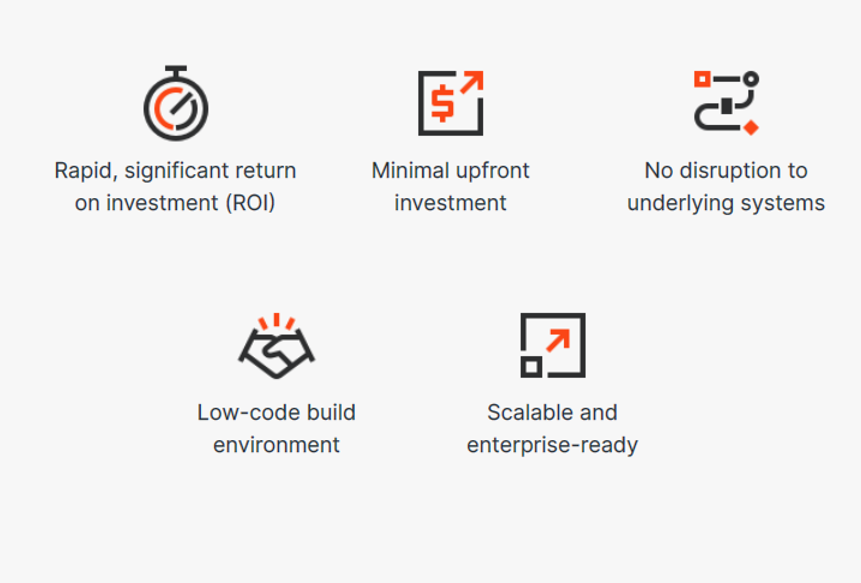Just like people, software robots can do things like understand what’s on a screen, complete the right keystrokes, navigate systems, identify and extract data, and perform a wide range of defined actions. But software robots can do it faster and more consistently than people, without the need to get up and stretch or take a coffee break.
To build and manage an enterprise-wide RPA program, you need technology that can go far beyond simply helping you automate a single process. You require a platform that can help you create and manage a new enterprise-wide capability and help you become a fully automated enterprise™. Your RPA technology must support you end-to-end, from discovering great automation opportunities everywhere, to quickly building high-performing robots, to managing thousands of automated workflows.
Among global executives, 63% say RPA is a major component in digital transformation
Companies across industries and around the world report that RPA drivers rapid, significant improvement to business metrics.
RPA Robots can ramp up quickly to match workload peaks and respond to big demand spikes.
57% say RPA reduces manual errors.
92% agree RPA has ‘met or exceeded expectations’ for better compliance.
68% of global workers believe automation will make them more productive
60% of executives agree RPA enables people to focus on more strategic work.
57% of executives say RPA increases employee engagement.
Robotic process automation streamlines workflows, which makes organizations more profitable, flexible, and responsive. It also increases employee satisfaction, engagement, and productivity by removing mundane tasks from their workdays.
RPA technology is changing how the world gets work done.
Software robots—instead of people—do repetitive and lower-value work like logging into applications and systems, moving files and folders, extracting, copying, and inserting data, filling in forms, and completing routine analyses and reports. Advanced robots can even perform cognitive processes like interpreting text, engaging in chats and conversations, understanding unstructured data, and applying advanced machine learning models to make complex decisions.
When you combine RPA’s quantifiable value with its ease of implementation relative to other enterprise technology, it’s easy to see why RPA adoption has been accelerating worldwide.
RPA can help many different types of industries address their specific operational issues in new and powerful ways.
Leaders of functional areas from finance to customer service to marketing to human resources and beyond find that RPA improves many processes, yielding higher capacity, faster throughput, and fewer errors for key processes.
From a CFO’s perspective, an investment in RPA technology delivers rapid ROI and requires minimal upfront spending compared to other enterprise technology.
IT executives find that RPA can be implemented with little disruption. And because software robots can easily access and work within legacy systems, RPA has become a key enabler for digital transformation. And modern RPA technology offers scalable, enterprise-ready platforms.
Employees find that it’s easy to adopt robotic assistants into their workdays, and that RPA’s low-code approach lets them become citizen developers who can build their own simple automation.
